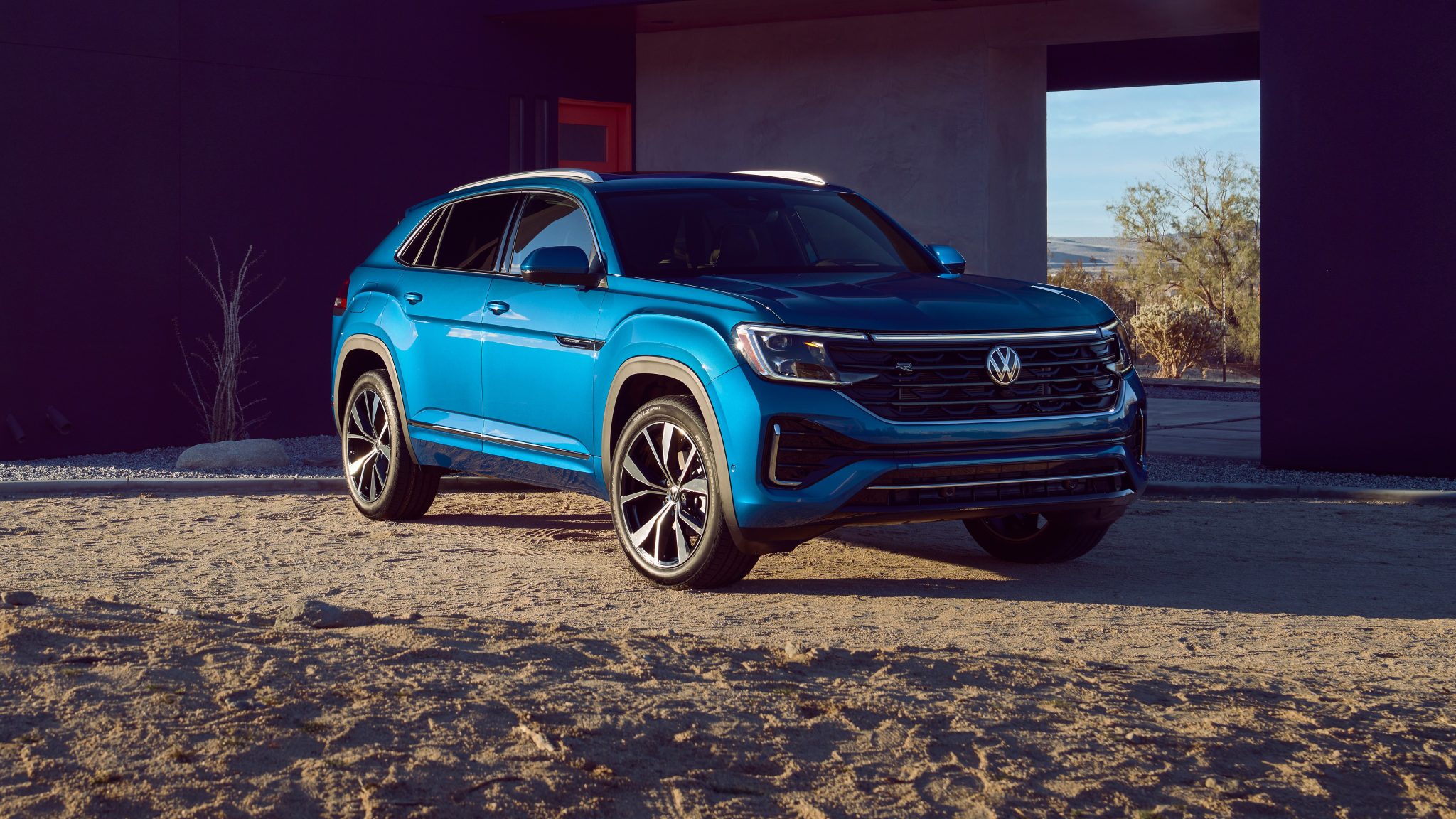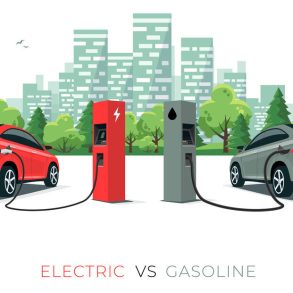Volkswagen Group Sales Data, Trends & Analysis for the U.S Automotive Market
The Volkswagen Group, often abbreviated as VW Group, is one of the world’s largest automotive conglomerates, headquartered in Wolfsburg, Germany. The group owns several well-known car, motorcycle, and commercial vehicle brands. Over the years, the Volkswagen Group has strategically acquired various companies, expanding its portfolio and global reach. Brands that sit under the Volkswagen Group umbrella include Volkswagen, Audi, SEAT, Skoda, Bentley, Bugatti, Lamborghini and Porsche.
Volkswagen Group U.S Sales Figures & Recent Highlights
The Volkswagen Group is one of the largest automobile manufacturers in the world by production volume, and the largest automobile manufacturer in Europe. In 2022, the group sold over 8.6 million vehicles worldwide. The Volkswagen Group is committed to sustainability and innovation. The company is investing heavily in electric vehicles and other sustainable technologies. The Volkswagen Group is also working to reduce its environmental impact and make its products and services more sustainable. The Volkswagen Group is a global company with over 672,000 employees worldwide. The group has production facilities in over 30 countries and sells vehicles in over 150 countries.
The Volkswagen Group has been selling cars in the United States since 1955. The company’s first model to be sold in the US was the Beetle, which quickly became popular with American consumers. In recent years, the Volkswagen Group has been one of the most successful automakers in the United States. The company’s sales have been growing steadily, and it has gained market share. In 2022, the Volkswagen Group sold over 370,000 cars in the United States, accounting for over 3% of the total US car market.
The Volkswagen Group’s most popular brands in the United States are Volkswagen and Audi. Volkswagen is known for its affordable and fuel-efficient cars, while Audi is known for its luxury cars. Other popular Volkswagen Group brands in the United States include Porsche and Bentley. The Volkswagen Group has a number of factors contributing to its success in the United States. One factor is the company’s strong brand portfolio. The Volkswagen Group owns a number of iconic brands that are well-known and respected by American consumers.
Volkswagen Group U.S Monthly Sales Data
Below we have a table that shows Volkswagen Group sales for the United States automotive market, but this time it is broken out by month. This is on a unit basis. This is Volkswagen Group new vehicle sales in the US across all its owned brands.
Volkswagen Group Annual Sales, Growth & Market Share in the United States
Below we have a table that shows total Volkswagen Group sales volumes for the US automotive market, broken out by year. This data captures all Volkswagen Group sales for the entire United States automotive market, including sub-brands.
| Year | Sales | YOY Change | Marketshare | Marketshare Change |
|---|---|---|---|---|
| 1950 | 2 | 0.00 | 100.00 | 0.00 |
| 1951 | 50 | 2,400.00 | 100.00 | 0.00 |
| 1952 | 93 | 86.00 | 100.00 | 0.00 |
| 1953 | 75 | -19.35 | 100.00 | 0.00 |
| 1954 | 827 | 1,002.67 | 100.00 | 0.00 |
| 1955 | 3,189 | 285.61 | 100.00 | 0.00 |
| 1956 | 7,375 | 131.26 | 100.00 | 0.00 |
| 1957 | 19,118 | 159.23 | 100.00 | 0.00 |
| 1958 | 25,036 | 30.96 | 100.00 | 0.00 |
| 1959 | 32,133 | 28.35 | 100.00 | 0.00 |
| 1960 | 35,697 | 11.09 | 100.00 | 0.00 |
| 1961 | 22,754 | -36.26 | 100.00 | 0.00 |
| 1962 | 32,514 | 42.89 | 100.00 | 0.00 |
| 1963 | 39,383 | 21.13 | 100.00 | 0.00 |
| 1964 | 41,051 | 4.24 | 100.00 | 0.00 |
| 1965 | 34,054 | -17.04 | 100.00 | 0.00 |
| 1966 | 40,198 | 18.04 | 100.00 | 0.00 |
| 1967 | 29,049 | -27.74 | 100.00 | 0.00 |
| 1968 | 57,862 | 99.19 | 99.43 | -0.57 |
| 1969 | 54,985 | -4.97 | 95.81 | -3.78 |
| 1970 | 72,515 | 31.88 | 92.84 | -3.19 |
| 1971 | 68,561 | -5.45 | 61.71 | -50.45 |
| 1972 | 74,881 | 9.22 | 56.71 | -8.82 |
| 1973 | 74,598 | -0.38 | 33.96 | -66.98 |
| 1974 | 54,485 | -26.96 | 30.87 | -10.00 |
| 1975 | 84,467 | 55.03 | 37.70 | 18.12 |
| 1976 | 69,567 | -17.64 | 28.07 | -34.30 |
| 1977 | 86,844 | 24.84 | 24.87 | -12.89 |
| 1978 | 95,036 | 9.43 | 24.97 | 0.40 |
| 1979 | 80,653 | -15.13 | 17.29 | -44.38 |
| 1980 | 103,670 | 28.54 | 10.45 | -65.49 |
| 1981 | 116,374 | 12.25 | 9.04 | -15.64 |
| 1982 | 94,482 | -18.81 | 7.73 | -16.96 |
| 1983 | 96,057 | 1.67 | 5.83 | -32.63 |
| 1984 | 135,710 | 41.28 | 6.43 | 9.39 |
| 1985 | 151,097 | 11.34 | 4.07 | -57.81 |
| 1986 | 130,765 | -13.46 | 3.28 | -24.11 |
| 1987 | 134,558 | 2.90 | 3.69 | 11.03 |
| 1988 | 114,483 | -14.92 | 2.97 | -24.34 |
| 1989 | 80,719 | -29.49 | 2.32 | -28.14 |
| 1990 | 65,969 | -18.27 | 2.19 | -5.66 |
| 1991 | 40,835 | -38.10 | 1.49 | -47.09 |
| 1992 | 36,975 | -9.45 | 1.42 | -4.63 |
| 1993 | 25,945 | -29.83 | 0.94 | -51.04 |
| 1994 | 19,307 | -25.58 | 0.80 | -17.54 |
| 1995 | 7,076 | -63.35 | 0.26 | -209.32 |
| 1996 | 7,016 | -0.85 | 0.25 | -1.99 |
| 1997 | 10,796 | 53.88 | 0.37 | 31.60 |
| 1998 | 15,890 | 47.18 | 0.51 | 26.97 |
| 1999 | 11,539 | -27.38 | 0.39 | -30.73 |
| 2000 | 14,133 | 22.48 | 0.50 | 22.79 |
| 2001 | 13,327 | -5.70 | 0.59 | 13.95 |
| 2002 | 8,675 | -34.91 | 0.36 | -60.65 |
| 2003 | 0 | -100.00 | 0.00 | 0.00 |
| 2004 | 0 | 0.00 | 0.00 | 0.00 |
| 2005 | 328,886 | 0.00 | 1.92 | 100.00 |
| 2006 | 336,342 | 2.27 | 2.02 | 4.79 |
| 2007 | 329,169 | -2.13 | 2.03 | 0.54 |
| 2008 | 310,358 | -5.71 | 2.33 | 12.84 |
| 2009 | 303,107 | -2.34 | 2.88 | 19.30 |
| 2010 | 379,117 | 25.08 | 3.23 | 10.82 |
| 2011 | 462,408 | 21.97 | 3.58 | 9.62 |
| 2012 | 637,122 | 37.78 | 4.08 | 12.31 |
| 2013 | 595,738 | -6.50 | 3.80 | -7.34 |
| 2014 | 583,311 | -2.09 | 3.53 | -7.76 |
| 2015 | 596,922 | 2.33 | 3.41 | -3.42 |
| 2016 | 584,254 | -2.12 | 3.32 | -2.72 |
| 2017 | 620,772 | 6.25 | 3.59 | 7.58 |
| 2018 | 634,509 | 2.21 | 3.65 | 1.61 |
| 2019 | 649,001 | 2.28 | 3.81 | 4.06 |
| 2020 | 599,595 | -7.61 | 4.08 | 6.63 |
| 2021 | 630,479 | 5.15 | 4.22 | 3.32 |
| 2022 | 498,566 | -20.92 | 3.64 | -15.75 |
| 2023 | 631,610 | 26.69 | 4.07 | 10.40 |
| 2024 | 140,130 | 0.00 | 3.69 | 0.00 |
Volkswagen Group U.S Annual Sales Units & Growth Chart
Below is a visual representation of Volkswagen Group ‘s U.S sales units over time. We have both the Volkswagen Group sales units and the growth in the United States market. Click on the items in the legend to see each series by itself.
Volkswagen Group U.S Growth Rate & Market Share Chart
Below is the annual growth rate for the Volkswagen Group in the United States, shown against the Volkswagen Group’s marketshare changes in the United States. This gives you a good look into how the Volkswagen Group has faired against the other brands in terms of absolute sales and effect on marketshare. Click on the items in the legend to see each series by itself.









